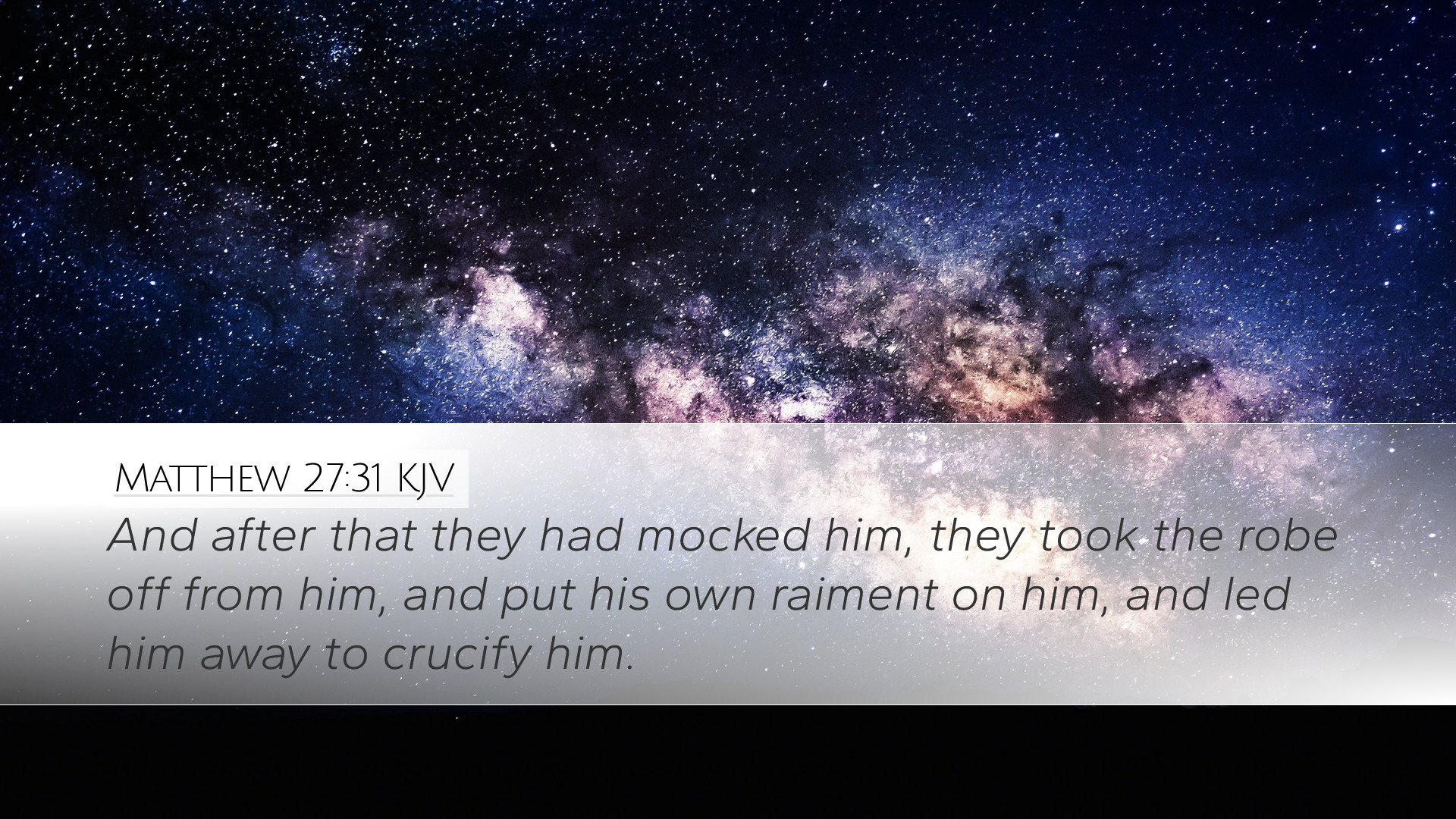Commentary on Matthew 27:31
Verse: "And after that they had mocked him, they took the robe off from him, and put his own clothes on him, and led him away to crucify him."
Introduction
This verse marks a poignant moment in the passion narrative of Jesus Christ, describing the events leading up to His crucifixion. The reactions of the soldiers, their mockery, and the stripping of Jesus have profound theological implications and reveal the depths of human sin and the extraordinary nature of Christ's sacrifice.
The Mocking of Christ
Matthew Henry observes that the mocking of Christ was not merely a physical act but a deeply spiritual and emotional assault. The soldiers ridiculed Him, undermining His claim to kingship by dressing Him in a purple robe, which was a gesture laden with irony. Jesus, the true King, was presented as a fool. This act served to satisfy their contempt and to emphasize His vulnerability.
Further, Albert Barnes reflects on the cruelty inherent in the mockery. The soldiers, representing worldly authority, sought to diminish Jesus’ significance. Their actions illustrate the rejection of Christ not just by Rome, but by humankind, embodying the enmity of a fallen world towards divine purity.
The Removal of the Robe
When the soldiers took the robe off Jesus, it symbolized the stripping away of false pretense. Adam Clarke emphasizes that this act of undressing Jesus had two dimensions. Firstly, it highlighted the anguish He endured, and secondly, it portrayed the humiliation that precedes the ultimate glorification in His resurrection. The robe, which mocked His identity, was removed, revealing Him as the suffering servant, fulfilling the prophecy of Isaiah.
Putting On His Own Clothes
The action of clothing Jesus again in His own garments is significant. Matthew Henry posits that this act illustrates the restoration of Jesus' dignity in a mocking context. Despite the suffering, He retained His identity as the Messiah. This moment can be interpreted as a moment of sorrow, highlighting the emotional turmoil as Jesus was dressed again, reminded of His coming suffering, yet it also anticipates His resurrection and vindication.
Led Away to Be Crucified
The final part of this verse, "and led him away to crucify him," conveys the gravity and finality of the decision made by the authorities. Albert Barnes notes that this action fulfilled the predictions regarding the Messiah's suffering. This moment is not simply about physical transportation but also represents the culmination of Jesus' mission on earth. He was led to fulfill the atoning purpose of His death, thus completing the work that had been set before Him.
Theological Reflections
This verse prompts deep theological reflection on the nature of suffering, sacrifice, and redemption. Adam Clarke emphasizes that in this act, the deeper spiritual battle is laid bare. The mocking soldiers symbolize a world that often fails to recognize the divine purpose amidst suffering. Yet, this suffering is not in vain; it serves the redemptive purpose of God.
Conclusion
In summary, Matthew 27:31 is rich in meaning and detail, encapsulating the mockery, humiliation, and profound significance of the events leading to the crucifixion. The insights from public domain commentaries challenge us to consider our own responses to Christ's suffering and to recognize the transformative power of His sacrifice. For pastors, students, theologians, and Bible scholars, this verse serves as both a historical account and a profound invitation to engage with the depths of divine love as expressed through suffering.


